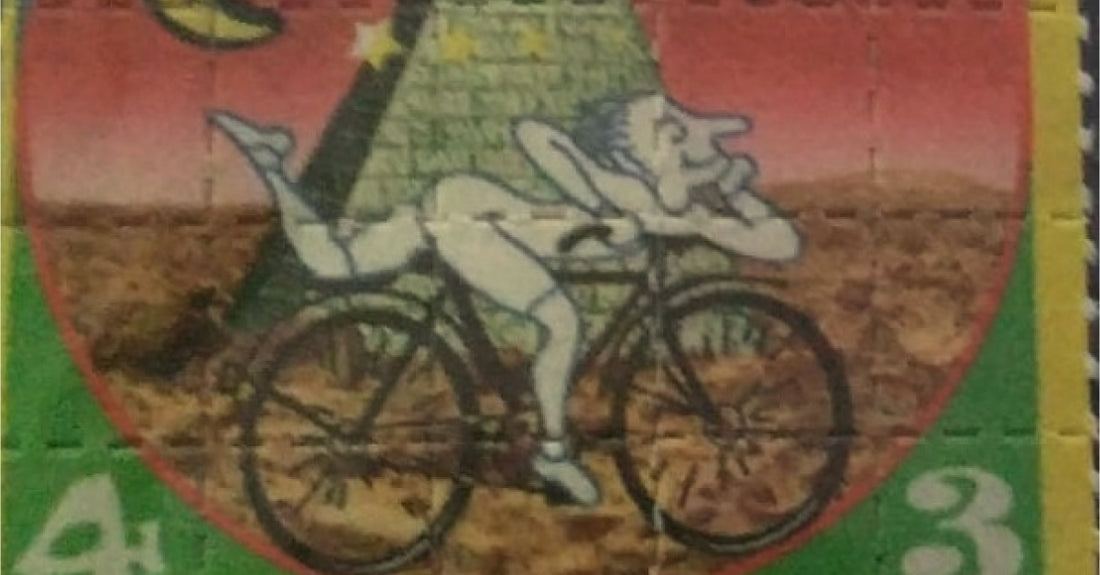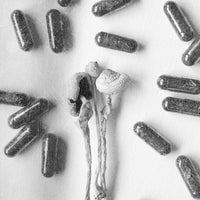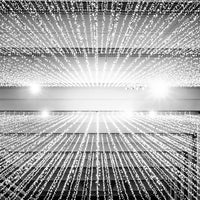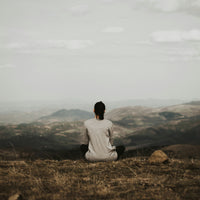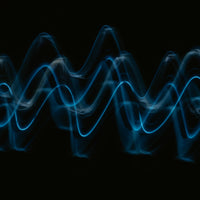At the time of this writing, Easter, one of the most surreal annual events on Earth, has just vanished down the rabbit hole for another year. In a gloriously incongruous collision of religious belief, pagan fertility rites and Candy Land-style children’s fantasy, a giant bunny hid brightly colored chicken eggs to celebrate the resurrection of the Supreme Being’s son. It’s a Mad Lib come to life, roughly equivalent to a commemoration of the Buddha’s illumination in which a giant armadillo hangs colorful jars of peanut butter from tree branches, and kids climb ladders to collect them.
Well, don’t get too complacent just yet. The Alice in Wonderland phantasmagoria of Easter was just a warmup. Strap on your helmet and get those safety pads out of storage, because Bicycle Day is here … which is—what else?—an annual celebration of LSD.
Nope, this holiday isn’t about bikes—though it’s a good bet that over the years some cyclists have shown up to Bicycle Day celebrations expecting the kind of festivities that World Bicycle Day offers, only to find themselves surrounded by swarms of giddy LSD enthusiasts paying homage to their favorite sacrament in all the psychedelic ways you’d expect.
San Francisco has been known to go off especially vibrantly on Bicycle Day, with live music, DJs, panel discussions, presentations and visionary art from the likes of Alex and Allyson Grey, Android Jones, Amanda Sage and Luke Brown. Other celebrations have included LSD-themed concerts, museum exhibits, workshops and educational seminars. For those celebrating at home, there’s everything from streaming social media events to Bicycle Day playlists available.
OK, but what in Peter Cottontail’s holy egg basket do bicycles have to do with LSD? Well, to make a long, strange trip short, Bicycle Day is the anniversary of history’s first deliberate LSD expedition—and, yes, cycling was involved.
You won’t need a bicycle for this journey, though. To copy a quote from a classic movie: where we’re going, we don’t need roads.
The Bicycle Trip that Started It All
Bicycle Day falls on April 19. Yes, that’s the day before the worldwide cannabis holiday, 4/20. And, yes, the back-to-back placement of these two festivities practically ensures that at least one person a year will try to call in sick to work by talking into a chocolate bar.
1943 was the year of the specific April 19 that Bicycle Day commemorates. It was then that Swiss chemist Albert Hofmann took the world’s first deliberate LSD trip.
But let’s backpedal for a moment.
As an employee of Sandoz Laboratories, Hofmann had been studying the fungus ergot in the hopes of finding a respiratory and circulatory stimulant. In doing so, he discovered lysergic acid diethylamide (LSD) in 1938. However, since this new concoction didn’t appear to be the miracle cure he sought, he shelved it without ingesting it.
Then, on April 16, 1943, Hofmann decided to take another look at the curious substance. While synthesizing a new batch of LSD, he inadvertently absorbed a tiny amount of it through his fingertips. As he later described in his memoir LSD: My Problem Child, this put him into “a not unpleasant intoxicated-like condition, characterized by an extremely stimulated imagination. I perceived an uninterrupted stream of fantastic pictures, extraordinary shapes with intense, kaleidoscopic play of colors.”
Naturally, Hofmann elected to find out if LSD had been the catalyst for his journey. When he returned to work on April 19 after the weekend, he took 250 micrograms of the compound at—ahem—4:20 p.m. Most drugs won’t affect consciousness in such a tiny quantity, so our protagonist was more than a little surprised to find himself engaged in an activity that the medical establishment now calls “tripping balls.” Though he later recalled that it was a “struggle to speak intelligibly,” he mustered up the communication skills to call for his assistant to help him make the journey home.
This escapade took place during WWII, when gas was scarce. Cars were prohibited on public roads at that time, so Hofmann and his assistant made the trek to his house by bike—hence the tradition of Bicycle Day.
Once home, Hofmann had an epic freakout that included fear of demonic possession, the perception of his next-door neighbor as an evil witch and the consumption of more than half a gallon of milk. However, after a doctor confirmed that Hofmann’s vital signs were normal, panic started giving way to pleasure.
“Now, little by little I could begin to enjoy the unprecedented colors and plays of shapes that persisted behind my closed eyes,” Hofmann wrote in his memoir. “Kaleidoscopic, fantastic images surged in on me, alternating, variegated, opening and then closing themselves in circles and spirals, exploding in colored fountains, rearranging and hybridizing themselves in constant flux … Every sound generated a vividly changing image, with its own consistent form and color.”
The following day, Hofmann saw the world “as if newly created,” with all his senses vibrating “in a condition of highest sensitivity, which persisted the entire day.”
Cycles of History
Hofmann’s discovery of LSD set off a Rube Golberg machine-like chain of events. Scientists and psychologists busily explored the therapeutic use of psychedelics. The folks at the CIA sought a weapon in LSD, and instead they got drum circles. With the help of advocates like Timothy Leary, LSD played a key role in igniting the counterculture movement of the 1960s, which included antiwar efforts and heightened interest in spirituality. Deeming the drug a danger to “American values” and to support for the Vietnam war, President Nixon launched a war on drugs. The use of LSD was banned, as was research looking at its curative properties.
By 1981, LSD had largely been filed under “Brain-Frying Substances that Will Make You Jump Out of a Window to Escape Tricycle-Riding Gorillas that Are Singing ‘Happy Birthday’” in the mainstream public’s imagination—or at least that of the feds. At that time, Northern Illinois University psychology professor Thomas Roberts launched a course on psychedelics. Under the shadow of illegality and societal scorn, this was a daring move. When the school’s provost questioned whether this was an appropriate topic of study, Roberts stood firm, using his tenure to his advantage. The class took place as planned.
In 1985, Roberts held the first Bicycle Day celebration at his house. He had originally intended to host the event on April 16, the day of Hofmann’s unintentional first trip. However, since that date fell in the middle of the week that year, April 19 (the day Hofmann rode his bike home during the world’s first deliberate acid trip) was a more practical choice. It also roughly coincided with the date of Paul Revere’s iconic midnight ride.
Apparently the first Bicycle Day went well, because it became an annual event. One of Roberts’ students made a written announcement of the celebration, and when Roberts sent this to friends and to members of an internet list, it kicked off a tradition that has endured ever since.
The Father of LSD
Hofmann himself was less than enthused about the idea of Bicycle Day. When Roberts wrote to him to let him know about the event, Hofmann expressed some irritation at the emphasis on bicycles rather than on LSD itself.
Hofmann regarded LSD as a “sacred drug” and a “medicine for the soul.” In the psychedelic experience, he saw a key to better mental health and greater wellbeing.
However, the title of his aforementioned memoir, LSD: My Problem Child, is indicative of his mixed feelings about the compound he unleashed upon the world. He felt that the counterculture had abused this sacrament, which helped cement its status as an illegal substance.
“[LSD] is not just fun,” he warned in the documentary Hofmann’s Potion. “It is a very serious experiment.”
Nevertheless, he decried the worldwide ban on LSD, noting in a New York Times interview, “It was used very successfully for ten years in psychoanalysis.”
Hofmann’s contributions to neuroscience and to the study of consciousness didn’t stop with the discovery of acid. He also pioneered the practice of microdosing, discovered the tryptamine 4-Acetoxy-DET and isolated the psychoactive alkaloids in magic mushrooms, giving them the names psilocybin and psilocin.
Mountain Biking
Though he comes off as a pleasant enough guy in interviews, Hofmann was hardly beyond criticism. This book explores Nazi Germany’s ties to his workplace, Sandoz Laboratories, and in this episode of the Psychedelic Salon podcast, host Lorenzo Hagerty takes issue with Dr. Hofmann’s request that he be paid for an interview. In Hagerty’s view, this “doesn’t exactly show Dr. Hofmann at his finest.”
“I think it’s important that we all keep in mind that everyone, even the great Albert Hofmann, is human and has a few character traits that we might not expect in one of our heroes,” Hagerty says. “The point I’m trying to make is that even with our failings, each and every one of us can still be great in our own ways, and that even the great ones among us are humans, complete with their own unique set of quirky character traits.”
Nevertheless, as Hagerty acknowledges, the father of LSD was a hero to many. The abidance of Bicycle Day long past his death in 2008 at age 102 bears witness to this.
When High Times asked Hofmann how he’d like people to remember him and his legacy, he replied, “Perhaps the image of a chemist riding along on a bicycle on the very first LSD trip will change to the Old Man of the Mountain.”
Damon Orion is a writer, musician, artist, and teacher based in Santa Cruz, CA. He has written for Revolver, Guitar World, Spirituality & Health, Classic Rock, High Times and other publications. Read more of his work at damonorion.com.
Read More: Can Psychedelics Help Us Face Our Fear of Death?
Read More: Harm Reduction for Your At-Home Psychedelic Retreat
